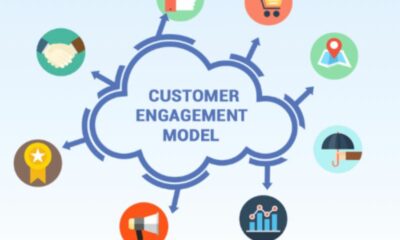Tech
Understanding the Fundamentals of Data Visualization

Data has become the lifeblood of today’s digital economy. However, the increasing complexity and volume of data can make it challenging to interpret and understand. That’s where data visualization comes in. It transforms raw, unprocessed data into a graphical representation, making it easier to comprehend, analyze, and use in decision-making. This article provides an in-depth look into data visualization strategies and how they are leveraged for better data understanding and utilization. Keep reading to learn more.
At its core, data visualization is the graphical representation of information and data. These visual elements, such as charts, graphs, and maps, provide an accessible way to see and understand trends, outliers, and patterns in data. Using visual elements, data visualization can help explain complex data-driven stories to both technical and non-technical people. As the volumes of data continue to increase, it’s predicted that dynamic, interactive data visualizations will become an integral part of business intelligence and decision-making.
One compelling visualization tool is the parallel coordinates plot. It’s particularly useful for visualizing multivariate data, as a vertical axis represents each variable in the data set, and lines across these axes connect the individual data points. This makes it possible to discover correlations and interactions among different data variables, which is particularly helpful in high-dimensional data analysis.
The key to effective data visualization is simplicity and clarity. Visualization should simplify complex data sets and provide insights that would not be immediately obvious from raw data forms. It’s important to remember that the main goal of data visualization is to make data more understandable, and sometimes, less is more. Overly complex visuals can confuse the viewer and distract from the main insights.
The Role of Data Visualization in Decision-Making
Data visualization plays an essential role in the decision-making process. Presenting data in a visual format helps to highlight crucial information, trends, and patterns that might be lost in text-based data. It allows decision-makers to grasp difficult concepts or identify new patterns quickly. Furthermore, with interactive data visualizations, decision-makers can manipulate the parameters to see different outcomes and results, enabling them to make more informed decisions.
Aside from decision-making, data visualization is a tremendous analytical tool. Data analysts use visualizations to monitor business processes and assess performances by visually tracking key performance indicators (KPIs). The capacity to visualize data in real time can alert businesses to issues or opportunities in their early stages before they become critical problems or missed ventures.
Moreover, data visualization can significantly enhance data storytelling. It provides a narrative to the masses of numbers, adds context, highlights the important parts of the data, and presents it in a way that even non-experts can understand.
Future Trends in Data Visualization

The field of data visualization is rapidly evolving, and several exciting trends are emerging. One is the rise of immersive data visualization through virtual reality (VR) and augmented reality (AR). These technologies allow users to engage with the data more interactively and intuitively, presenting data in three-dimensional space.
Another promising trend is the rise of real-time data visualization. As businesses are becoming increasingly data-driven, the need for real-time insights is more important than ever. Real-time data visualization enables businesses to monitor operations, track performances, and respond to changes instantly, facilitating more proactive decision-making.
Data visualization is a powerful tool that aids businesses in understanding and utilizing their data more effectively. Whether making more informed decisions, identifying patterns and trends, or communicating information more efficiently, data visualization has become essential to modern business strategies.
-

 Business3 weeks ago
Business3 weeks agoPrakash and Kamal Hinduja: Driving Social and Environmental Change
-
Education4 weeks ago
Fred DuVal: University Leadership as a Critical Resource for Climate Change Research and Life-Saving Solutions
-

 Health3 weeks ago
Health3 weeks agoThe Hinduja Brothers Commitment to Global Health: Empowering Communities Across Borders
-

 Cryptocurrency3 weeks ago
Cryptocurrency3 weeks agoDesigned For The Masses: How Akasha (AK1111) Is Unlocking Crypto For The Next Billion Users
-

 Cryptocurrency4 weeks ago
Cryptocurrency4 weeks agoNexaglobal & Future World Token (FWT): Could This Be the Next Big Crypto Investment of 2025?
-

 Sports4 weeks ago
Sports4 weeks agoWomen’s NCAA Tournament 2025 Sweet 16: Full Schedule, Fixtures, Teams, Bracket, and How to Watch March Madness Basketball Match Live
-

 Startup2 weeks ago
Startup2 weeks agoCost-Saving Strategies Every Small Business Owner Should Know to Boost Efficiency
-

 Startup3 weeks ago
Startup3 weeks agoMatthew Denegre on the Art of Deal Sourcing: Finding the Right Investment Opportunities













